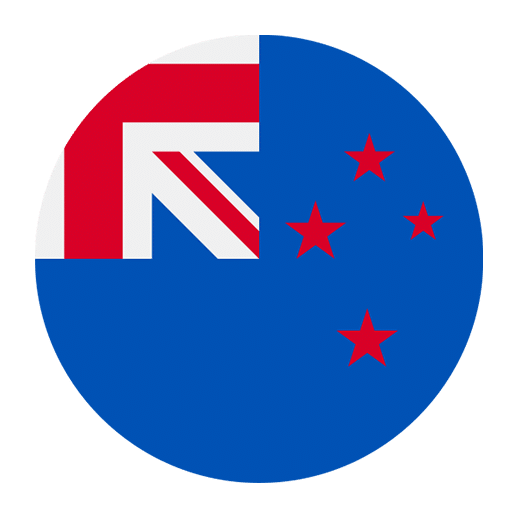New Zealand, also known as Aotearoa in the Māori language, is a country rich in natural beauty, cultural diversity, and linguistic heritage. The indigenous Māori culture is deeply woven into the fabric of New Zealand society, and the Māori language, or Te Reo Māori, is an official language of the country. For travelers, learning a few key phrases in Māori can enhance the travel experience, foster deeper connections with locals, and show respect for the country’s indigenous culture. This article will guide you through the basics of using Māori language on the road in New Zealand, offering practical phrases, cultural insights, and travel tips.
Understanding the Importance of Te Reo Māori
Te Reo Māori holds a special place in New Zealand. Recognized as an official language alongside English and New Zealand Sign Language, it is a cornerstone of Māori culture and identity. Efforts to revitalize the language have been ongoing since the 1980s, and today, it is increasingly common to hear and see Māori language in daily life, from place names and greetings to public signage and media.
Learning a few phrases in Te Reo Māori not only enhances your travel experience but also shows respect for the indigenous culture. It can open doors to more meaningful interactions with locals and provide insights into the rich history and traditions of the Māori people.
Basic Māori Phrases for Travelers
Before diving into specific travel-related phrases, it’s helpful to start with some basic greetings and expressions. These will be useful in a variety of contexts and help you feel more comfortable using the language.
Greetings and Basic Expressions
– **Kia ora** (kee-ah ora) – Hello, thank you
– **Tēnā koe** (teh-nah kway) – Hello (to one person)
– **Tēnā kōrua** (teh-nah kor-oo-ah) – Hello (to two people)
– **Tēnā koutou** (teh-nah ko-toe) – Hello (to three or more people)
– **Haere mai** (hi-reh my) – Welcome
– **Nau mai** (no my) – Welcome
– **Ka kite anō** (kah kee-teh ah-nor) – See you again
– **Haere rā** (hi-reh rah) – Goodbye (said to someone leaving)
– **E noho rā** (eh naw-ho rah) – Goodbye (said to someone staying)
– **Aroha** (ah-ro-ha) – Love, compassion
– **Whānau** (fah-now) – Family
Travel-Specific Māori Phrases
When traveling in New Zealand, you’ll find that certain phrases are particularly useful. Whether you’re navigating public transport, exploring natural sites, or engaging with locals, these expressions will come in handy.
Transportation
– **Kei hea te teihana pahi?** (kay heh-ah teh tay-hah-nah pah-hee) – Where is the bus station?
– **Kei hea te teihana tereina?** (kay heh-ah teh tay-hah-nah teh-ray-nah) – Where is the train station?
– **E hia te utu mō tēnei?** (eh hee-ah teh oo-too mor ten-ay) – How much does this cost?
– **Kei te haere ahau ki…** (kay teh hi-reh ah-how kee…) – I am going to…
– **Kua tae mātou ki…?** (koo-ah tie mah-toe kee…) – Have we arrived at…?
Accommodation
– **Kei hea te hōtēra?** (kay heh-ah teh ho-teh-rah) – Where is the hotel?
– **He rūma mō te tangata kotahi** (heh roo-mah mor teh tah-ngah-tah ko-tah-hee) – A room for one person
– **He rūma mō ngā tāngata e rua** (heh roo-mah mor ngah tah-ngah-tah eh roo-ah) – A room for two people
– **He aha te utu mō te pō?** (heh ah-hah teh oo-too mor teh paw) – What is the rate per night?
Dining
– **Kei hea te wharekai?** (kay heh-ah teh fah-reh-kai) – Where is the restaurant?
– **He aha ngā kai pai?** (heh ah-hah ngah kai pie) – What are the good dishes?
– **He pai tēnei kai** (heh pie ten-ay kai) – This food is good
– **He inu māku** (heh ee-noo mah-koo) – A drink for me
– **Kei te hiahia ahau i tētahi kawhe** (kay teh hee-ah-hee-ah ah-how ee teh-tah-hee kah-feh) – I would like a coffee
Exploring New Zealand’s Natural Beauty
New Zealand is renowned for its stunning landscapes, from lush rainforests and pristine beaches to rugged mountains and tranquil lakes. Many of these natural wonders have names derived from Te Reo Māori, and understanding these names can add depth to your exploration.
Common Māori Place Names
– **Aoraki / Mount Cook** – The highest mountain in New Zealand
– **Te Wai Pounamu** – The South Island (literally “The Waters of Greenstone”)
– **Rotorua** – Known for its geothermal activity and Māori culture
– **Taupō** – A large lake in the North Island, also a town
– **Taranaki** – A mountain and region on the west coast of the North Island
Nature-Related Phrases
– **Kei hea te awa?** (kay heh-ah teh ah-wah) – Where is the river?
– **Kei hea te moana?** (kay heh-ah teh mo-ah-nah) – Where is the ocean?
– **He aha te ingoa o tēnei maunga?** (heh ah-hah teh ee-ngoh-ah or ten-ay ma-oo-ngah) – What is the name of this mountain?
– **He ataahua tēnei wāhi** (heh ah-tah-ah-hoo-ah ten-ay wah-hee) – This place is beautiful
– **Kei te pai ahau ki te hīkoi** (kay teh pie ah-how kee teh hee-koy) – I like to walk/hike
Engaging with Māori Culture
Respecting and engaging with Māori culture is an essential part of traveling in New Zealand. Understanding cultural practices and protocols can enrich your experience and demonstrate your respect for the traditions of the Māori people.
Cultural Protocols
– **Marae Protocol**: If you are visiting a marae (a communal or sacred place that serves as a venue for Māori communities to gather), it’s important to follow protocols. Always wait to be welcomed onto the marae and follow the guidance of your hosts.
– **Hongi**: The traditional Māori greeting involves pressing noses and foreheads together. It symbolizes the sharing of breath. If you are invited to participate in a hongi, do so respectfully.
– **Karakia**: These are prayers or incantations often said before meals or ceremonies. If you are present when a karakia is being said, remain quiet and respectful.
Cultural Phrases
– **Tēnā koe e te rangatira** (teh-nah kway eh teh rah-ngah-tee-rah) – Greetings to you, chief (a respectful greeting)
– **Ngā mihi nui** (ngah mee-hee noo-ee) – Many thanks
– **Kei te pēhea koe?** (kay teh peh-hea kway) – How are you?
– **Kei te pai ahau** (kay teh pie ah-how) – I am good
– **Whānau** (fah-now) – Family
– **Whaikōrero** (fah-ee-kor-eh-roh) – Formal speech-making, often performed at important gatherings
Practical Tips for Using Māori Language
Using Te Reo Māori during your travels can be both rewarding and challenging. Here are some practical tips to help you incorporate the language into your journey:
– **Practice Pronunciation**: Māori has a unique set of sounds, and proper pronunciation is important. Take the time to listen to native speakers and practice common phrases.
– **Use Language Apps**: There are several language learning apps and resources available that focus on Te Reo Māori. These can be valuable tools for learning on the go.
– **Engage with Locals**: Don’t be afraid to use the phrases you’ve learned when interacting with locals. Most people will appreciate your effort and may even help you improve.
– **Attend Cultural Events**: Participating in cultural events and activities, such as kapa haka performances or visiting a marae, can provide opportunities to hear and practice the language in context.
– **Be Respectful**: Always use the language respectfully, and be aware of the cultural significance behind certain words and phrases. If you’re unsure, it’s okay to ask for guidance.
Conclusion
Traveling in New Zealand offers a unique opportunity to immerse yourself in the natural beauty and rich cultural heritage of the country. By learning and using Te Reo Māori, you can enhance your travel experience, connect more deeply with the people you meet, and show respect for the indigenous culture that is an integral part of New Zealand’s identity. Whether you’re navigating the bustling streets of Auckland, exploring the geothermal wonders of Rotorua, or hiking the majestic mountains of the South Island, a few words in Māori can go a long way in making your journey memorable and meaningful. Kia ora and happy travels!

